I Dig Sports
CA chief Kevin Roberts concedes club cricket decline
Published in
Cricket
Tuesday, 23 July 2019 04:26
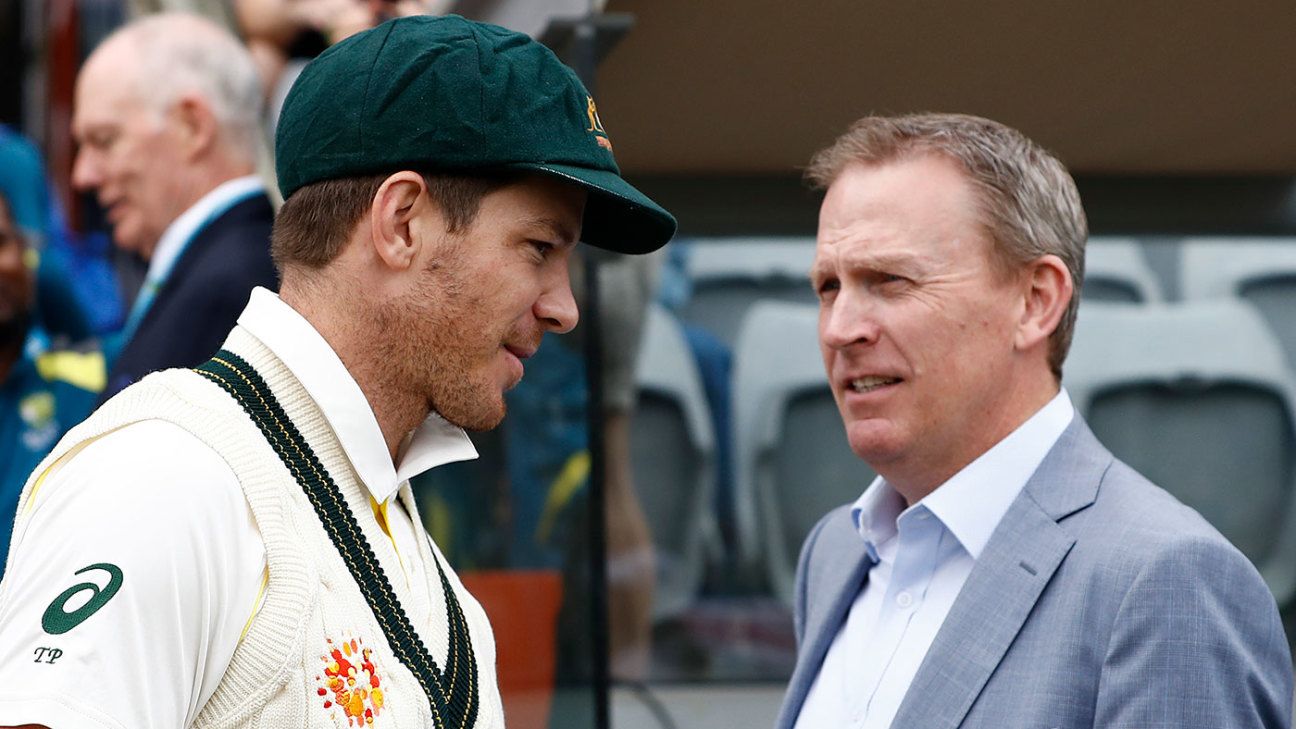
Kevin Roberts, the Cricket Australia chief executive, has conceded that club cricket is in "gradual decline" and admitted that there is widespread disaffection in the game's grassroots following numerous signs of anger manifest in reports in the nation's two major newspaper groups.
In May, News Corp published a story revealing an old internal document in which Cricket Australia had called for a generational change in the leadership of clubs, spun to suggest that the governing body had "appealed for the dismissal of thousands of long-serving club volunteers".
This week, following the publication of CA's annual cricket census figures that habitually trumpet an overall increase in participation, the journalist and columnist Malcolm Knox wrote reports suggesting that the governing body vastly over-inflated its figures, making the contention that registered club cricketers number only about 250,000.
Roberts, who had declined to be interviewed by Knox before the publication of the story in the Sun-Herald on Sunday and instead asked to speak this week after his return home from the UK, conceded a problem area though disputing the precise nature of the figures. He did so in an open letter to all registered club players and volunteers around the country.
"Whilst I disagree with the conclusions reached and the figures provided by Malcolm, what came through clearly to me was the sense that some within the cricket community don't feel they are being heard," Roberts wrote. "We acknowledge that the number of registered players in traditional club environments has experienced a gradual decline over the past few years, even though total cricket participation continues to grow at a healthy rate.
"Cricket clubs, like all club sport, face retention challenges in an increasingly time-poor society. As a volunteer, I also appreciate that leading a cricket club is becoming harder and new volunteers are not always lining up to help the club stalwarts. The commitment to supporting volunteers and making sure the game has a successful and sustainable future is one of Australian cricket's top priorities under my leadership.
"I understand it will take more than a letter from me to make everything better. It's on me to lead ongoing consultation and action from all of us at Cricket Australia and the State & Territory Cricket Associations who serve their communities. We need to maximise the impact of the millions of dollars we've committed to improving community cricket facilities and the 68 new community cricket staff employed by State & Territory Cricket Associations to support clubs and volunteers."
ALSO READ: How many cricketers does Australia really have?
Following the announcement of the census results, ESPNcricinfo published a detailed breakdown of CA's club participation figures, reflecting three consecutive years of decline in club cricket numbers - from 392,812 male and female, senior and junior players in 2016 to 365,076 this year.
There has been a renewed focus within CA upon making its own participation numbers more accurate so that funding and resources can be better directed towards problem areas. At the same time, CA's community cricket chiefs Belinda Clark (currently acting as the head of team performance) and Kieran McMillan have openly acknowledged that more needs to be done to bridge the gap between burgeoning school programs and clubs.
"In recent years, we introduced modified junior formats to improve recruitment and retention, started offering free community cricket coaching programs and invested in growing cricket for girls," Roberts wrote. "These commitments are starting to bear fruit. Providing improved digital support to reduce volunteer workload is another key focus into the future.
"Having spent most of my life in cricket clubs as a player, coach, volunteer and parent, I'm passionate about clubs being the heart and soul of their communities. The initiatives I mentioned above are a positive step in the right direction, and we will continue to engage and listen to cricket communities, even if we don't like what we hear."
Roberts also conceded that some players were counted twice on the way to reaching CA's overall census participation figures - something he admitted was true even of his own daughter for the fact she plays both club and indoor cricket - but defended the wider methodology used.
"When combining school participation programs and registered players, we reach the total participation figure of 1.65 million. Whilst this does include some players more than once, like my daughter who plays club and indoor cricket, it's simply not true to suggest that total participation is inflated by double-counting most or all registered players," Roberts said. "We are proud of cricket's deep connection with local communities and the fact that cricket plays a part in the lives of so many participants across the country.
"Like most organisations, we are working to improve our data. Junior clubs will have noticed this with all registrations being managed online this season, a process which makes it much easier for parents and players to register anytime, anywhere. I have had the privilege of meeting many of cricket's employees, players and volunteers throughout my lifetime of involvement in cricket.
"Cricket has helped shape who we are, and in some cases, has seen us become friends for life. Your passion and commitment to the game are key reasons why cricket is such a strong part of our nation's fabric."
Tagged under
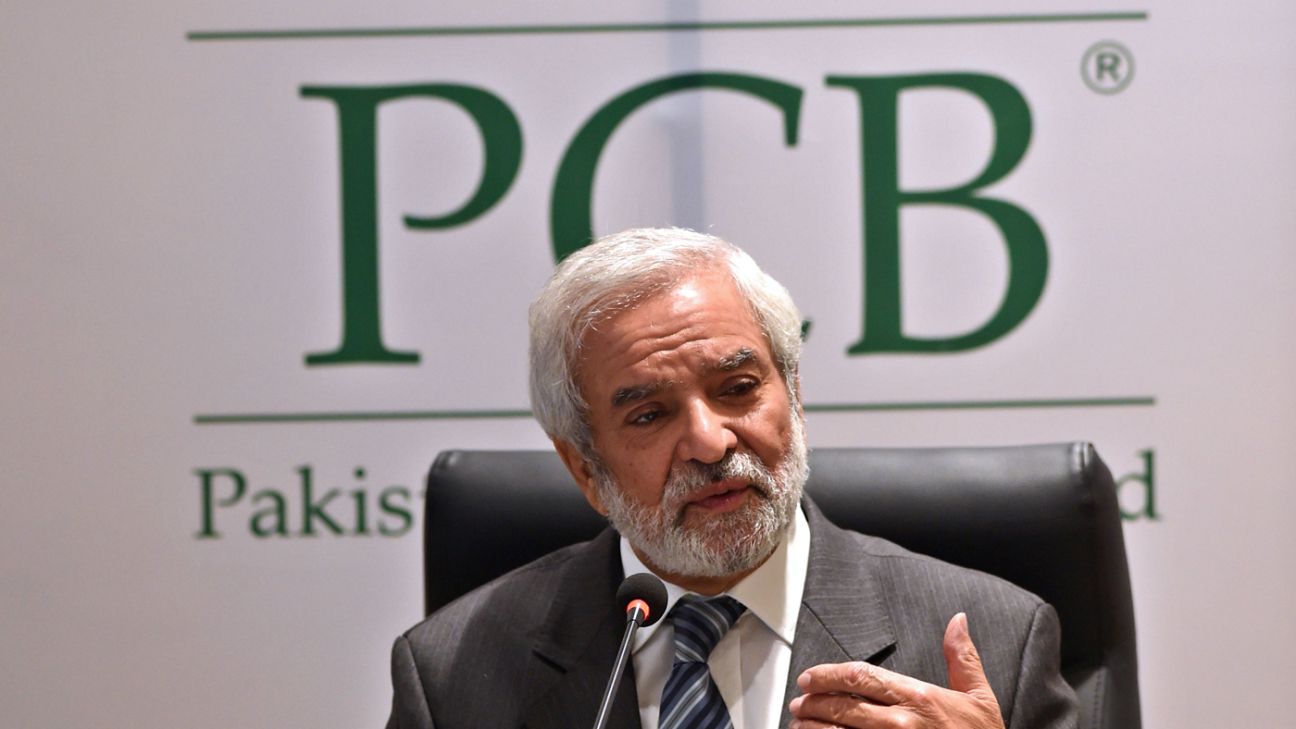
The ICC has appointed Ehsan Mani, the Pakistan Cricket Board (PCB) chairman, as the head of one of its most powerful committees - Finance & Commercial Affairs.
Mani's appointment brings to an end the stranglehold that the Indian, English and Australian cricket boards had for more than a decade over the F&CA, which is responsible for designing budgets for ICC events and distributing money to its member countries.
The other members of this committee are Indra Nooyi (independent director), Amitabh Choudhury (BCCI acting secretary), Chris Nenzani (CSA president), Imran Khawaja (ICC vice-chairman), Earl Eddings (CA chairman) and Colin Graves (ECB chairman). ICC chairman Shashank Manohar and ICC chief executive officer Manu Sawhney will also sit on the F&CA as ex-officio members.
This will be Mani's second time as F&CA chairman. He had held the post between 1996 and 2002 and negotiated the ICC's first ever broadcast rights deal then worth approximately USD 550 million. Mani, then, moved on to become ICC president until 2006 and was also instrumental in helping the ICC seal a USD 1.1 billion media rights deal with ESPN Star Sports for the 2007-15 cycle.
It is understood that Manohar had recommended Mani to the F&CA chair during the ICC annual conference held in London last week.
This committee holds significant power within the ICC. Back in 2014, when its working group comprising N Srinivasan, Wally Edwards and Giles Clarke (heads of the BCCI, CA and ECB respectively) put forward a revenue distribution model that allowed India, Australia and England to take home a greater share of the ICC's profits on the argument that they brought in the most money anyway. The model broke down in 2017 when Manohar took charge and said it amounted to bullying by cricket's Big Three countries.
In the last 10 years only one person outside the Big Three has led the F&CA - Alan Issac, former head of New Zealand Cricket, in 2011-12. Interestingly, when the ICC Board approved the Big Three revamp in 2014, Issac was the governing body's president.
Leading the F&CA, Mani, who also sits on the ICC Audit Committee, will be taking some major decisions, including identifying the events the ICC will host in its next cycle (post 2023 World Cup) and negotiating the media rights deal for that period.
Tagged under
Disappointing not to get picked for India - Shubman Gill
Published in
Cricket
Tuesday, 23 July 2019 06:31
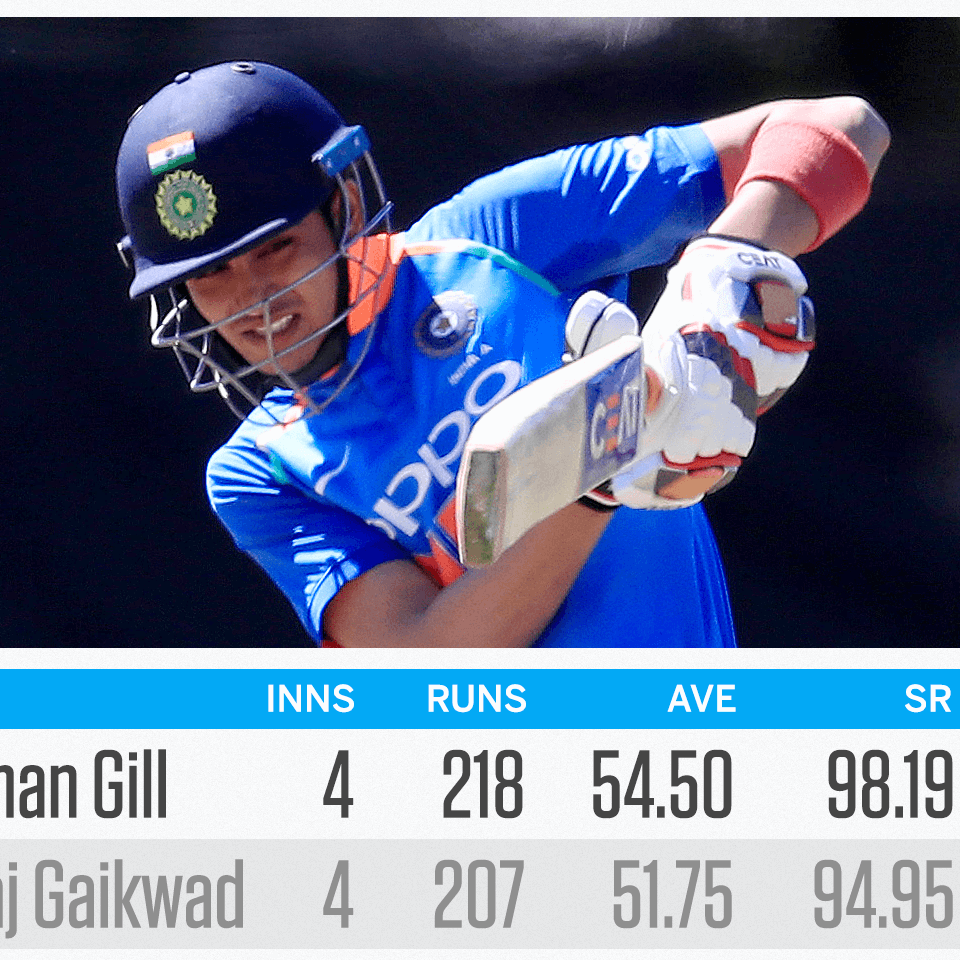
Shubman Gill has admitted to being disappointed at not being selected for India's tour of the West Indies, saying he expected to be there in at least one of the squads.
India will play three T20Is, three ODIs and two Tests against West Indies, with the first T20I on August 3.
Gill, who is with the India A squad in the Caribbean, finished the one-day series as the top run-getter with 218 runs in four matches, averaging 54.50 with a strike rate of 98.19. He hit three half-centuries and was named the Man of the Series.
Gill had earned a call-up to the India squad for the New Zealand tour earlier this year, and played two ODIs, though he didn't get into double digits in either game.
"I was waiting for the Indian senior team to be announced on Sunday and I expected to be selected for at least one of the squads," Gill told CricketNext. "It was disappointing not to get picked but I am not going to spend time thinking over it. I'll keep scoring runs and performing to the best of my ability to impress the selectors.
"It was a fantastic series for me and team as well since we won with a 4-1 margin," Gill said. "Personally, I would have liked to carry on and score at least a couple of hundreds in those fifties. But I will learn from this experience. The biggest lesson that I have learned from my first West Indies tour is to try to curb my natural game depending on the match condition."
But while he didn't make it to the squad, Gill was discussed at the selection meeting, with chief selector MSK Prasad saying, "He went to New Zealand when KL Rahul was suspended and now Rahul has come back so he (Gill) is in the waiting list. Definitely he will be considered in the future."
In his brief career, Gill has shown he has the game to adapt to different formats, and found success at almost every level he has played at. His first-class career is only nine games old but he's already amassed more than 1000 runs, and has hit at least a half-century in each of those matches. His List A numbers are also good. In 47 matches, including 17 for India A, Gill has 1942 runs at an average of 47.36 and a strike rate of 87.51.
Most of his T20 career has come in the IPL for Kolkata Knight Riders, having batted at different numbers from 1 to 7. Despite that, Gill's average (32.31) and strike rate (132.90) have been impressive.
Gill's next assignment is the three four-dayers in the Caribbean, with the first match starting on Wednesday in North Sound.
Tagged under
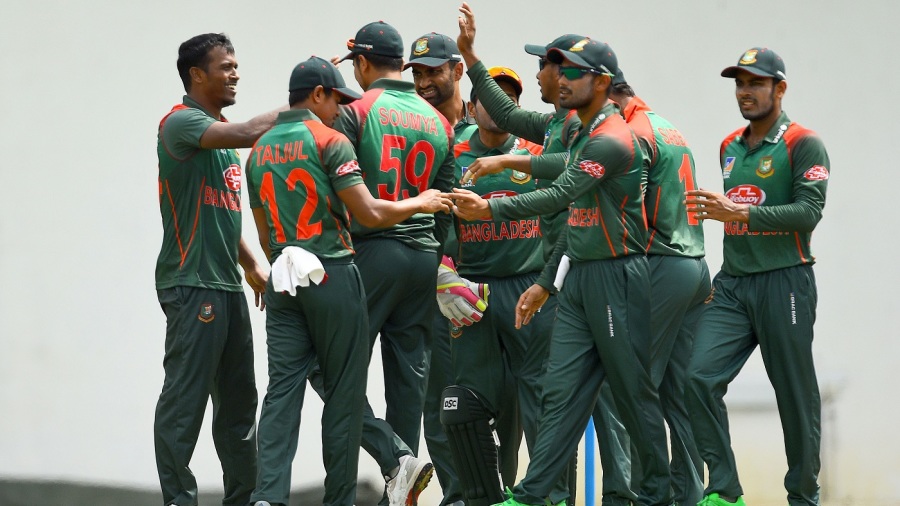
Bangladesh 285 for 5 (Mithun 91, Mushfiqur 50, Kumara 2-26) beat Sri Lanka Board President's XI 282 for 8 (Shanaka 86, Shehan 56, Soumya 2-29, Rubel 2-31) by five wickets
Mohammad Mithun and Mushfiqur Rahim steered Bangladesh to a five-wicket win in their only warm-up match against Sri Lanka Board President's XI at the P Sara Oval in Colombo.
Mithun fell nine short of a hundred, having struck 11 fours and a six in his 100-ball knock in a 283-run chase. Mushfiqur, meanwhile, peppered seven boundaries en route to his 46-ball 50. Mahmudullah and Sabbir Rahman complemented the half-centurions with breezy thirties to help take Bangladesh home with 11 balls to spare. The touring side lost only five wickets, Lahiru Kumara the pick of Board President XI's attack with 2 for 26 off his six overs.
Earlier, Dasun Shanaka's 63-ball 86 took the home side to 282 for 8 in 50 overs after they opted to bat. He struck six sixes and as many fours, while Shehan Jayasuriya made 56 off 78 balls.
For the visitors, Rubel Hossain and Soumya Sarkar took two wickets each. Rubel struck with his third ball, trapping opposition captain Niroshan Dickwella in front for a duck, and his second strike - Oshada Fernando - preceded Taskin Ahmed's dismissal of Danushka Gunathilaka that left the hosts reeling at 3 for 32 in the eighth over. An 82-run stand between Bhanuka Rajapaksa and Shehan then helped steer Board President's XI past 100, but it eventually proved insufficient to edge past Bangladesh ahead of the ODI series proper.
Bangladesh will take on Sri Lanka in the first ODI in Colombo on June 26.
Tagged under
Source: Lions' Slay, Harrison to report to camp
Published in
Breaking News
Tuesday, 23 July 2019 06:39
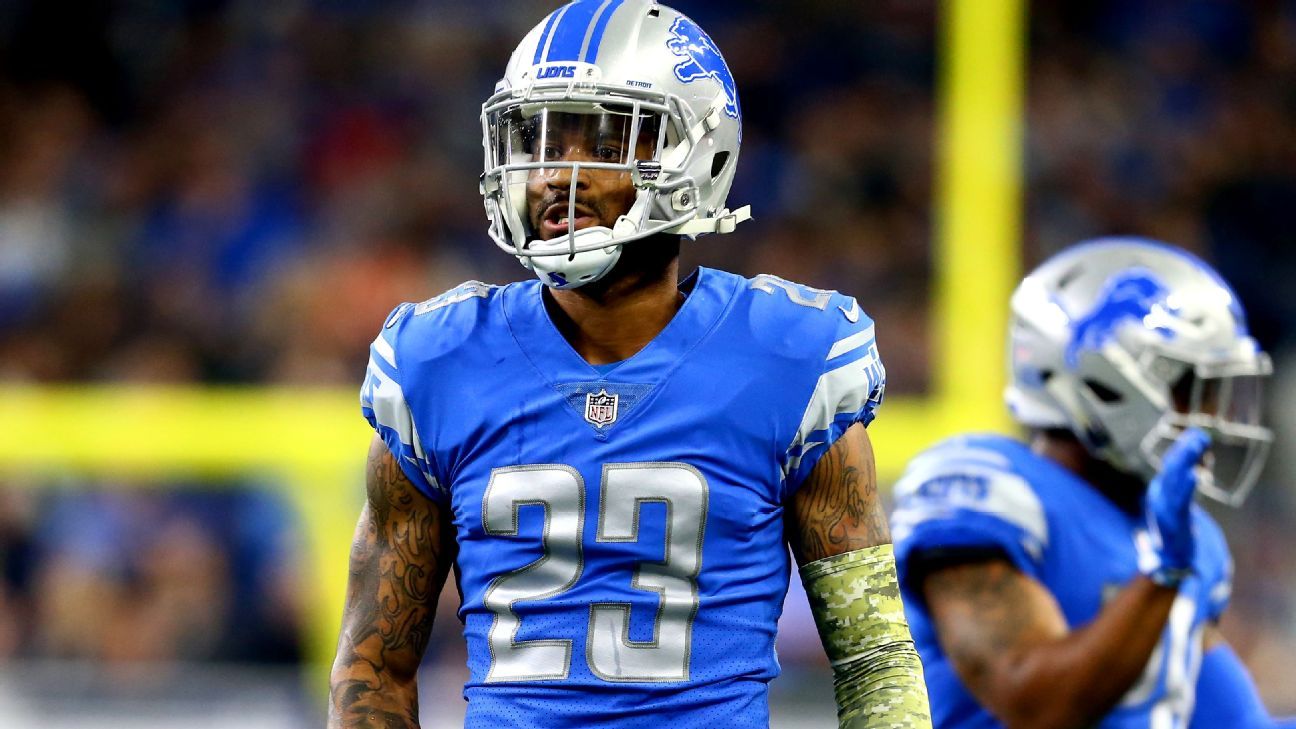
A pair of key Detroit Lions defenders will be in attendance when the team opens training camp this week.
A source told ESPN's Adam Schefter that cornerback Darius Slay and defensive tackle Damon Harrison will report for the start of training camp.
Both players had skipped the Lions' mandatory minicamp last month as they sought reworked contracts.
Slay has been a constant in the secondary for the Lions since earning a full-time starting role in 2014, his second season in the league. He has made two Pro Bowls and was a first-team All-Pro in 2017. With Glover Quin being cut by Detroit, Slay is also one of the senior players in the secondary.
He has two years left on the four-year extension he signed in 2016 and is scheduled to make $12.55 million in base salary this season and $10 million next season. By skipping offseason workouts, Slay has already forfeited much of the $250,000 bonus that was worked into his deal.
Harrison was traded to the Lions from the New York Giants last season and has two years left on his contract. He is scheduled to make $6.75 million in base salary this season and $9 million next season. Like Slay, Harrison has forfeited almost all of his $250,000 workout bonus by skipping the voluntary offseason workouts.
During his time as Detroit general manager, Bob Quinn has never extended a player or given him a new contract with two years remaining on his deal. Slay will be 30 years old when his current deal expires, and Harrison will be 32.
Both Slay and Harrison are represented by agent Drew Rosenhaus.
ESPN's Michael Rothstein contributed to this report.
Tagged under
Lowe: Why Kawhi Leonard's power move was a watershed moment
Published in
Basketball
Monday, 22 July 2019 19:05
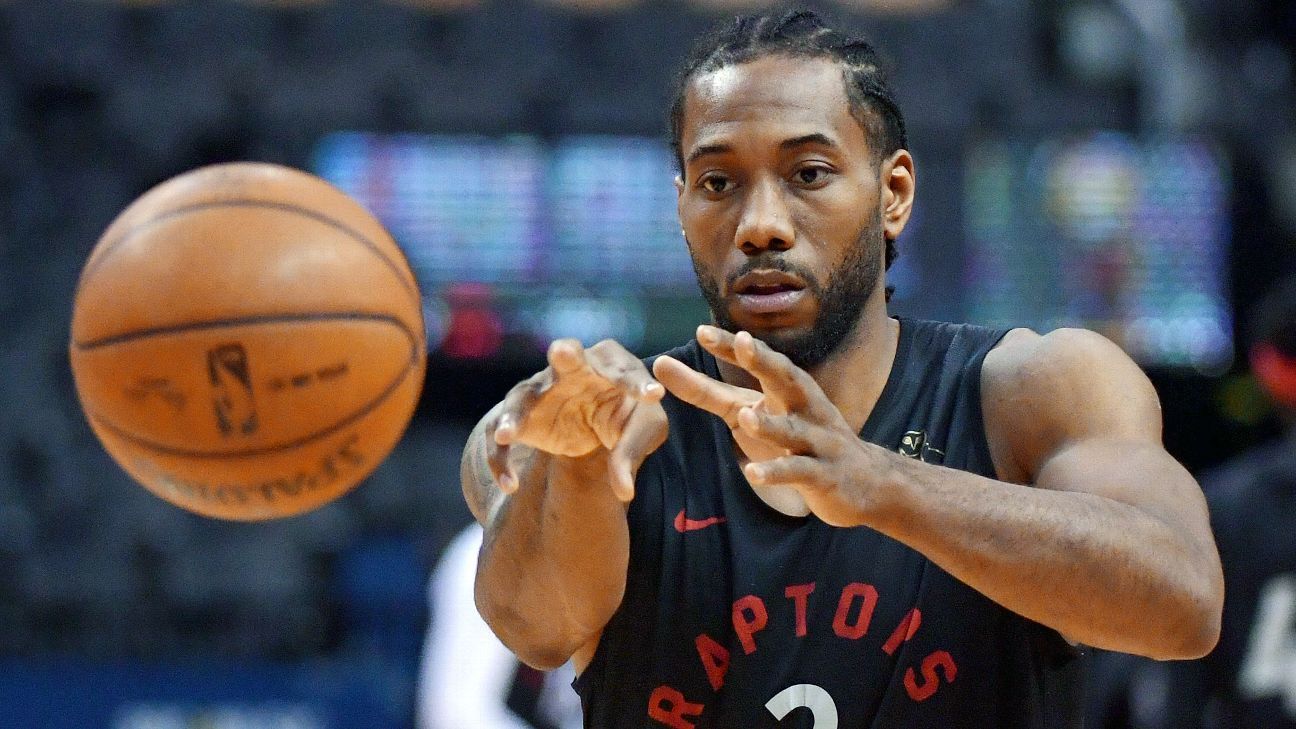
Kawhi Leonard nudging Paul George out of Oklahoma City with two years remaining on George's contract will go down as a watershed moment in the NBA -- for the teams it built and tore apart; for the bounty the Thunder received; but mostly for what it signified about the degree to which superstars now control roster-building.
Leonard lending George leverage is a new extension of player empowerment. Kareem Abdul-Jabbar demanded a trade in 1974. LeBron James, Dwyane Wade and Chris Bosh synchronized their free agencies to build their own team in a city of their choosing.
Nine years later, James publicly lusted after Anthony Davis -- a player under contract to another team who soon requested a trade. Rich Paul, the agent James and Davis share, cooled some of the broader market in a way that ended up favoring James' Los Angeles Lakers. Leonard's ploy with George to join forces on the LA Clippers was essentially a stealth, sped-up version of that -- though with George under contract for at least one season longer than Davis.
Under the terms of an NBA contract, a team agrees to pay a player in exchange for basketball services -- with the understanding that the team can trade that player whenever it wants. The best players trading themselves reverses that dynamic. Trade requests don't tilt the playing field out of balance. They even it.
Some officials -- and even some agents -- argue players put teams at an unfair disadvantage when requests come with short destination lists intended to chill the market. That is unpersuasive. Suitors understand their odds of re-signing traded stars. A lot of teams cornered into dealing stars have done well despite such lists becoming public.
The best players have few ways to leverage their stature. They get drafted and sign four-year contracts. After four seasons, they enter restricted free agency; their team has a right to match any offer. It takes at least seven years before the world's best players have total freedom in choosing where to play.
All along, the NBA's maximum contract limits their salary to something below what they would earn in an open market. They have few levers to pull. A trade request is the most potent.
In theory, trade requests grow more effective as a player approaches free agency: I can leave soon, so you might as well trade me now. The NBA and the players' union accelerated that process by agreeing to reduce contract lengths. Players are bolder about taking two- and three-year deals if doing so means reentering free agency after their 10th season -- when most become eligible for the largest possible contract.
The NBA knew shorter deals would generate more player movement, if only because players would cycle in and out of free agency more often. I'm not sure they expected something like what transpired with Leonard and George.
The Thunder could have said no to George. His contract runs through at least the 2020-21 season. George is somewhere between the league's eighth- and 11th-best player. No matter the return, losing a player that good in his prime hurts. You get only so many chances to acquire one.
But acting with so much time left on George's deal juiced that return. Agents defend trade requests by pointing out it is better for the jilted team than having a superstar walk for nothing. They are inarguably right. The Thunder and New Orleans Pelicans -- after their trade of Davis to the Lakers -- have futures that were otherwise closed off to them. They might end up the ultimate "winners" of their respective trades.
But this is basketball, not asset-ball. The point is to build actual teams. The combination of shorter contracts and more frequent trade requests probably compresses the window to build and replenish teams, executives say.
I wonder if we are losing something -- from the perspectives of team-building, basketball style and fan engagement. It probably is harder now to build great teams that can sustain for six, eight, even 10 seasons. The apex of basketball happens when great players stay together for a long time -- when they develop chemistry and mutual understanding so deep that they almost act as one shape-shifting entity. They communicate in winks and nods. They anticipate where each teammate will be before he gets there. It is almost as if they can pass and cut blindfolded.
Are we losing that? Some executives have speculated for years that coaches might simplify schemes as a way of adapting to roster churn. Others find this concern a little naive. One executive from a team with a fairly intricate offense noted his team hasn't had trouble finding free agents with the feel and smarts to pick it up fast.
But that same executive -- and several others -- cited the "beautiful game" of the 2013 and 2014 San Antonio Spurs as the sort of stylistic achievement, almost a basketball euphoria, that will be harder to reach if the league trends toward more superstar player movement. San Antonio coaches and executives were adamant they needed years to master the style that obliterated LeBron's last Miami Heat team into abject, shoulder-sagging surrender. Even San Antonio's role players -- Patty Mills, Tiago Splitter, Boris Diaw, Danny Green, Cory Joseph -- were in at least their third seasons with the Spurs when they found nirvana in 2014.
The counterpoint, of course, is the Golden State Warriors. They redefined basketball style. Their core players stuck together for a half-decade, and their three founding superstars remain. They just made five straight NBA Finals. They might not have made all five without the fluky cap spike that allowed them to add Kevin Durant, but they are damned good without him.
The Warriors drafted those three stars, including one all-time great player in Stephen Curry. They rose to prominence with all three still on rookie contracts, leaving flexibility to dot the roster with win-now veterans. They re-signed Curry and Draymond Green to extensions below their respective maximum salaries -- way below in Curry's case. Teams rearranging entire rosters to add multiple max-salaried veteran stars cannot replicate that model.
Those kinds of microwaved teams might just have a limited shelf life. Veteran superstars are about 30, or older. Upending rosters to fit them often leaves little depth or means of adding any. Great teams draft at the bottom of the first round. Most one-and-done prospects selected in that range will not be ready to play real postseason minutes until the core superstars have aged.
Teams deal picks in acquiring stars anyway. After years of teams hoarding first-round picks like gold, the Lakers, Clippers, Warriors, Utah Jazz and Houston Rockets tossed away at least two apiece this summer. Most did so in pursuit of legitimate stars, and for the L.A. teams, three of the top 12 players in the league -- and two of the best half-dozen. You gather picks precisely to get those sorts of players when you have a window to win big. The difference is you used to get them for longer.
The Clippers traded an unprecedented bounty -- five picks, two swaps, Danilo Gallinari and one good young player in Shai Gilgeous-Alexander who might be more valuable than all that stuff -- to effectively acquire both George and Leonard. Leonard ended up signing for only two guaranteed seasons; he and George can both hit free agency in two years.
Two years is nothing. If one star tweaks a knee in May, Year 1 is toast, and they are instantly on expiring contracts. Maybe George and Leonard -- natives of the L.A. area -- have indicated a willingness to re-sign in 2021; Leonard might have insisted on the two-year deal to get back into free agency after his 10th season. But things can change. If Year 1 goes sideways, the noise about the future of the George-Leonard partnership will intensify.
As one rival executive put it, the Thunder-Clippers trade could go down as "one of the two or three most lopsided deals ever, and also one the Clippers were right to do anyway."
Elsewhere in the league, continuity lives. The Milwaukee Bucks, Denver Nuggets and Portland Trail Blazers are banking on it. They have to. An underplayed subplot of this summer is that five superstars relocated to New York and Los Angeles. You can gloss over it by pointing out that the Nets and Clippers were never free-agent destinations and that the Knicks whiffed again. Fair.
But the photo negative almost never happens. Multiple top-10 players do not conspire to get to Indiana, Milwaukee, Charlotte, Oklahoma City, Portland, Detroit, Minnesota. It has rarely happened other than (kind of) in LeBron's second Cleveland stint, and waiting for a generational player to be born near your non-glamour market -- and to feel the pull of home -- is not a replicable plan.
Teams in those markets can't afford to hemorrhage picks the way Houston, Golden State and the L.A. teams just did.
Those teams -- and the league office -- are reckoning post-Kawhi with what the endgame of player empowerment might look like. When will a superstar coming off his rookie deal sign the one-year qualifying offer -- allowing him to enter unrestricted free agency after his fifth season and signaling his intention to leave?
Qualifying offers are getting huge now -- into the $15 million-plus range for top draft picks. That is about half of what those players could earn in that one season by signing new long-term max contracts, but it's life-changing money. What if a player really wants out? What if he has a huge shoe deal?
What if the players' union pushes for the abolition of restricted free agency in the next round of collective bargaining agreement talks?
"We have always strove to loosen the restrictions in free agency," says Michele Roberts, executive director of the National Basketball Players Association. "We will do that again in the next CBA negotiations."
On the Bill Simmons podcast last week, Simmons and I discussed what Gersson Rosas, Minnesota's new president of basketball operations, might say if Karl-Anthony Towns requested a trade tomorrow. My response: Remind Towns he is under contract through 2023-24 and reassure him the Timberwolves will build a better team around him.
That would probably work. Time is on Minnesota's side. But what if a player in Towns' position pouts in practice and decides to play at three-quarters speed until his request is granted? What if he complains of general soreness -- back, knee, whatever -- and asks to sit out for maintenance?
Vince Carter mailed it in until the Toronto Raptors traded him to the Nets in 2004. Joe Vardon, then of Cleveland.com, reported Kyrie Irving threatened to undergo knee surgery before training camp in 2017 if the Cavaliers did not move him. (Irving later denied that. ESPN's Dave McMenamin reported Irving threatened to skip training camp. Irving eventually had knee surgery while with the Boston Celtics.) Could the Spurs have brought Leonard back into the fold for the final year of his contract in 2018-19 had they refused to trade him? Jimmy Butler -- General Soreness himself -- threw a one-man rebellion until the Wolves caved.
Requesting a trade does not (to me) amount to breach of contract; teams trade players all the time. But some of the above scenarios at least approach that territory. Teams can fine players for sitting out without good cause. They never will, because they know doing so will alienate other stars.
These kinds of doomsday scenarios sound far-fetched. In the aggregate, that is probably correct. Few players are prepared to toss away entire seasons and stain their reputations. Teams with time on their side can wait players out. But basketball is a sport of stars. It takes only one or two veering into this area every decade for it to be something that matters. People around the league are absolutely scared of it becoming a thing.
As for the nuts and bolts of it all, there are some tweaks under discussion, including returning to longer contracts or providing incumbent teams even more of a years-and-money advantage. Not long ago, a lot of teams agitated for a move away from longer deals; bad six- and seven-year contracts locked them in cap prison.
But one key variable has changed: The cap goes up every season. From 2005 through 2014 -- almost a full decade -- the cap rose only from $49.5 million to $58.6 million. It stayed at almost exactly $58 million for six consecutive seasons. It has almost doubled to $109 million over the five seasons since. A bad long-term deal is a little less damaging now.
(A bad max deal starting at 35% of the cap is still crippling. Ask the Washington Wizards. I proposed a few cap-related remedies for that here: tax relief; one-time-only supermax amnesty provisions; small cap exceptions for teams that sign players to supermax deals; making deals that start at 35% of the cap count for exactly that much in every season, even if the cap holds flat; and more.)
The union might push back on any move to lengthen contracts that chips away at any of the short-term flexibility stars currently enjoy.
"We have heard the grumblings about players 'running the league' and how the league might try to rein things in by further modifying and restricting free agency," Roberts says. "We will fight any effort by the governors to revert back to the olden days."
The league could broaden access to contract extensions. Boston would have offered Irving an extension last fall, sources say, but rules capped Irving's first-year salary in such a deal at 120% of his 2018-19 salary -- well short of what he stood to make by entering unrestricted free agency.
Right now, players who sign new contracts in free agency cannot be traded until Dec. 15 of the following season at the earliest. A few team executives proposed extending that no-trade period to two full years after a player signs a four- or five-year contract. I suspect a lot of teams and stars would object.
It's too early for anything so drastic. Leonard coaxing George into a very early trade request is not indicative of any widespread problem. But it was a remarkable moment in NBA history and one that has insiders of all stripes -- players, agents, team executives, the league office -- wondering what comes next.
Tagged under
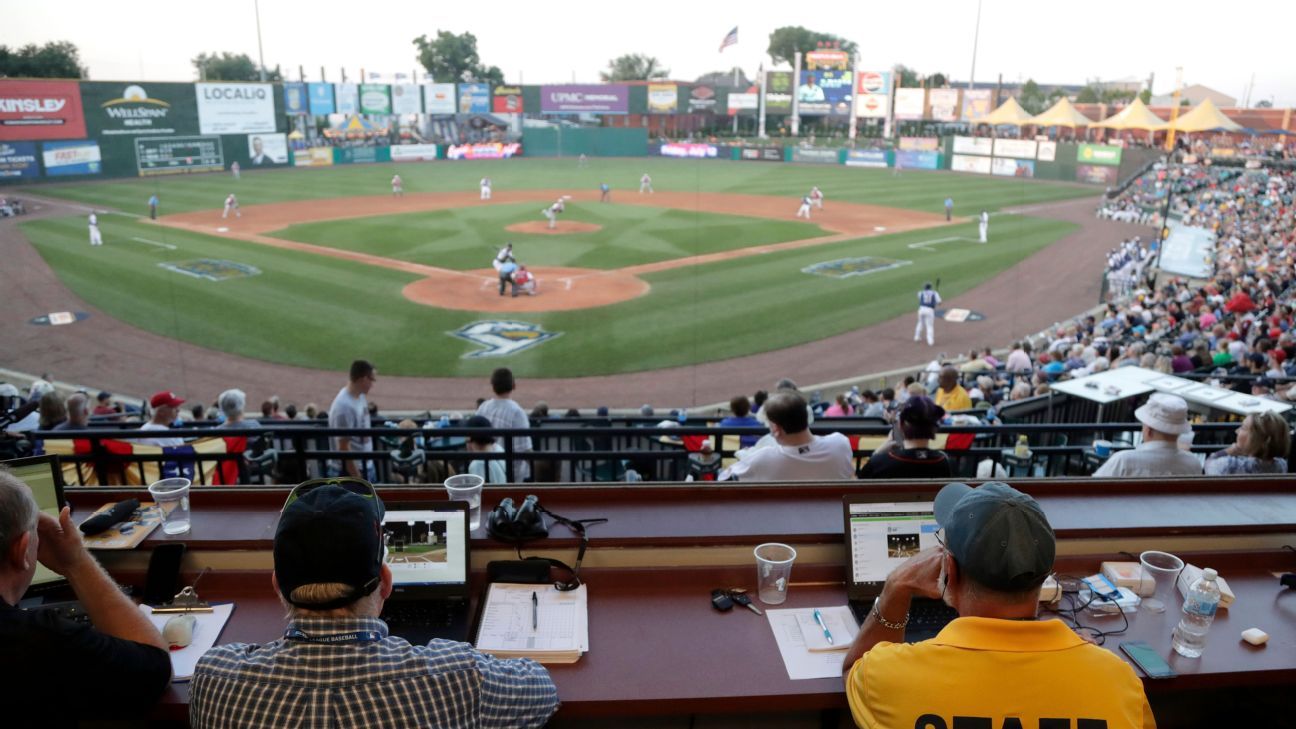
The independent Atlantic League is so happy with "robot umpires" that it will continue using the system for the rest of the season, a source told ESPN's Buster Olney on Tuesday.
The league became the first American professional baseball league to let a computer call balls and strikes at its all-star game earlier this month. Plate umpire Brian deBrauwere wore an earpiece connected to an iPhone in his pocket and relayed the call upon receiving it from a TrackMan computer system that uses Doppler radar.
He crouched in his normal position behind the catcher and signaled balls and strikes.
After the successful test at the all-star game, the league started rolling out the technology to stadiums throughout the league.
The umpires have the ability to override the computer, which could consider a pitch a strike when the ball bounces and then crosses the zone. TrackMan also does not evaluate check swings.
The experiment with radar-tracking technology to call balls and strikes was originally expected to begin at the start of the season but experienced some delays.
Atlantic League president Rick White said at the all-star break that he feels his organization is on the cutting edge of a movement.
"We're very excited about what this portends not only for our league but for the future of baseball," he said. "What we know is technology can help umpires be more accurate, and we're committed to that. We think the Atlantic League is being a pioneer for all of the sport."
The Atlantic League has an agreement with Major League Baseball to test rules changes.
Other rules changes being tested:
• Batters can try to steal first base on any pitch that was not caught in flight. It expands the traditional dropped-third-strike rule to all pitches, and batters can be thrown out if they try to run.
• One foul bunt is allowed with two strikes before it becomes a strikeout.
• Pitchers are required to step off the rubber to try a pickoff.
• There is a relaxation on check swings to be more batter-friendly.
The Associated Press contributed to this report.
Tagged under
MLB trade deadline tiers: 31 players who could be dealt
Published in
Baseball
Tuesday, 23 July 2019 05:57
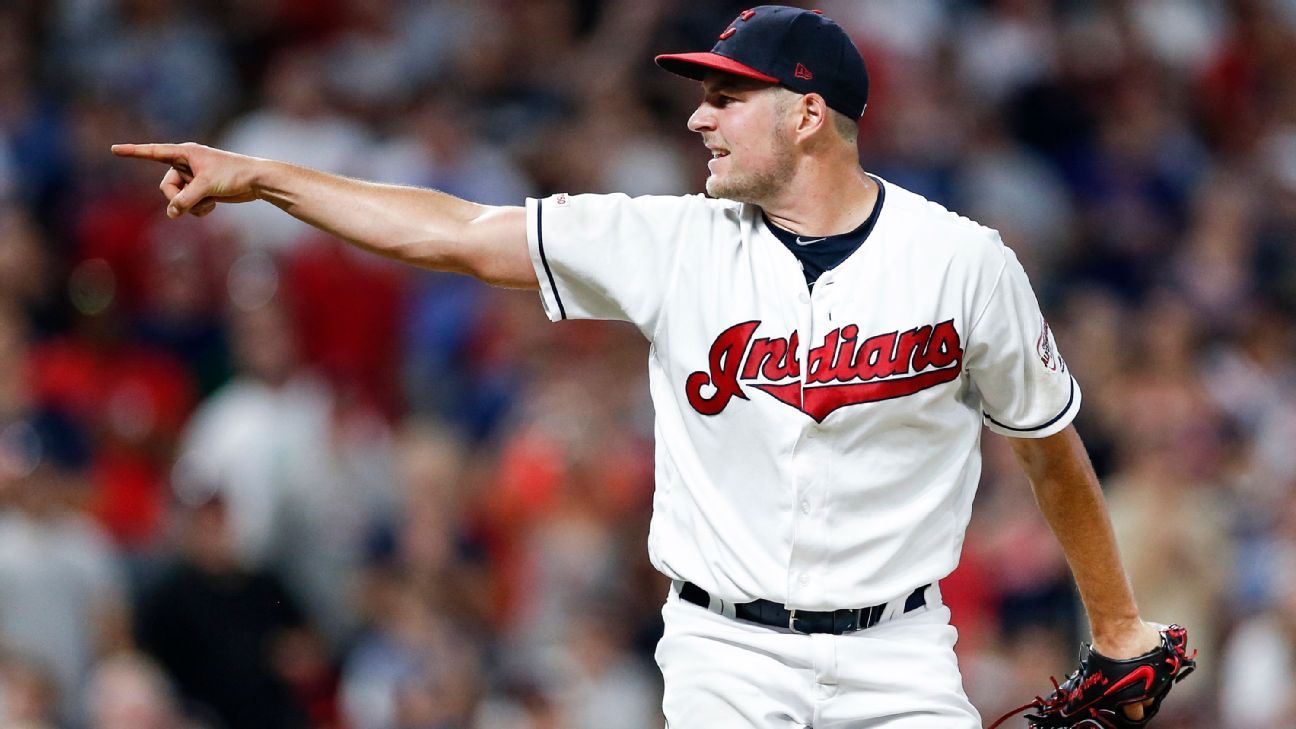
There are many big decisions left to be made with only eight shopping days left until the 2019 MLB trade deadline. As your team tries to figure out if it is a buyer, seller or somewhere in between, we break down which stars could be on the move before July 31. Whether a starter, bullpen arm, position player or even just some general help is on the wish lift, these are the players who could fill a need for any interested party.
Jump to ... Starting pitchers | Bullpen help| Hitters for hire| The long shots
More deadline coverage: Rumors, tracker & more | Passan's preview | One player each team should trade for or deal away | What it's like to get traded
The starting pitcher market
1. Trevor Bauer, Cleveland Indians: This may be the biggest "What will they do?" situation this deadline. The Indians were 11 games back of the Twins in mid-June, but they have clawed back into the race despite the absences of Corey Kluber and Carlos Carrasco. Bauer hasn't been as dominant as last season, but he might still rank as the best starting pitcher available due to his ability to chew up innings and put batters away. He's under team control through next season, making him more attractive than a one-year rental.
So why would the Indians trade him? They need offense and may get Kluber and Carrasco back to join Shane Bieber and Mike Clevinger in what would still be a formidable rotation. Bauer will also likely get close to $20 million in arbitration next season -- a price tag that is too steep for the Indians (and could scare some teams from wanting him). Plus, there is the need for the Indians to keep churning talent to remain competitive into the future.
"I also think we're at a different point organizationally, like we were in the offseason, where a lot more of our guys are maturing on their contracts and so, regardless of our competitive position, you explore different things than you otherwise would have," Indians general manager Mike Chernoff told Zack Meisel of The Athletic last week. In other words: The Indians may look to be creative and that may mean trading Bauer.
2. Madison Bumgarner, San Francisco Giants: You know the story. The Giants were stumbling along in last place all season, and a Bumgarner trade seemed like a foregone conclusion. But they've been red hot in July and climbed into the back end of the wild-card race, so now a trade is less likely. Remember, the Giants can just keep Bumgarner and ride this season out and still receive draft-pick compensation if he signs elsewhere as a free agent.
Making Farhan Zaidi's decision even more difficult is that Bumgarner has been pitching so well that his trade value is much higher than it was a couple months ago. His strikeout-to-walk ratio is 4.84 compared to 2.53 in 2018 and he has a 1.55 ERA over his past five starts. Any team would love to have Bumgarner and his big-game reputation on the mound in October.
ESPN's Jeff Passan reported last week that the Astros, Twins, Phillies and Brewers are the most likely trade partners in a Bumgarner deal.
3. Marcus Stroman, Toronto Blue Jays: Like Bauer, Stroman is an enticing trade target because he's not a free agent until after the 2020 season. Passan recently reported that "multiple GMs expect Stroman to be dealt." Stroman is also attractive because he keeps the ball on the ground -- he has the second-highest ground ball rate among qualified starters -- which has helped him limit home runs. With the Blue Jays spinning in the mud for the foreseeable, they'll look to continue to add more young talent.
4. Mike Minor, Texas Rangers: Minor signed a three-year, $28 million contract that goes through next season, but Minor is unhappy with all the trade rumors. "I feel like ever since I signed it's been a topic," he told reporters last week. "It's almost like I signed just so they could trade me." The 2019 All-Star is having the best season of his career and owns a 5.9 WAR that already ranks as one of the five best seasons by a Rangers starter in franchise history. GM Jon Daniels has said the Rangers "probably" won't trade Minor, but also added that "we're not going to rule anything out."
5. Tanner Roark, Cincinnati Reds: Roark has been pretty solid in a tough park to pitch in, and he's a pending free agent. He's not a front-of-the-line starter and wouldn't bring back a top prospect, so the Reds may decide to just ride things out unless they completely tank in the final week before the deadline.
6. Zack Wheeler, New York Mets: Another free agent-to-be, Wheeler looked like a lock to be traded until landing on the IL with shoulder fatigue. Passan wrote that the IL stint "more or less destroys his trade value." An MRI revealed no structural damage and he might even make it back for a start before July 31. Wheeler has the stuff to pull out Eovaldi-like results -- if he's healthy -- so somebody may still take a chance on him.
7. Mike Leake, Seattle Mariners: He's strictly a back-end innings eater who throws strikes, but he has alternated some very good outings with some awful ones much of the season. Getting away from the terrible Seattle defense could help, and the Mariners would have to eat a big chunk of his salary to get even a Grade C prospect in return.
8. Trevor Richards, Miami Marlins: Of the 136 pitchers who have thrown 60 innings, Richards is basically middle of the pack in wOBA, in line with starters such as Zach Davies and Miles Mikolas. So he's better than you probably think. He's also easy on the payroll since this is his first full season in the majors. That's valuable to the Marlins, but they need some young hitters, so they might be willing to trade one of the young pitchers.
Looking for bullpen help?
9. Kirby Yates, San Diego Padres: If the Padres decide to trade Yates, they'll be able to extract maximum value for a pitcher they claimed on waivers from the Angels back in 2017. (To be fair, the Yankees also cut Yates and the Yankees purchased him from the Indians and the Indians purchased him from the Rays, so four organizations gave up on Yates.) He has been the best closer in baseball with an ERA barely above 1.00 thanks to a wipeout splitter, he doesn't give up home runs, and he's controlled through next season.
10-11. Will Smith and Sam Dyson, Giants: Smith has been one of the best lefty relievers the past couple of seasons, pitching better than ever after missing all of 2017 with Tommy John surgery. He gets righties and lefties out, so he fits in as either a closer or set-up guy. He'll be a free agent, so he's just a rental piece.
Dyson's career appeared in jeopardy back in early 2017 when he started the season with the Rangers with six losses and a 10.80 ERA in 17 appearances. They traded him to the Giants, and now he's having his best season as he's back to throwing more strikes with a high ground ball rate. He's arbitration-eligible for another year.
If the Giants stay hot until the deadline, they could also keep Bumgarner and deal from their bullpen depth (Tony Watson, Mark Melancon and Reyes Moronta are also potential trade chips) for immediate help rather than prospects. "This entire season for us has never been a throwaway season or rebuilding season," Zaidi said last week on KNBR-680. "Not every trade that's made leading up to the trade deadline is a pure buy-or-sell deal. Sometimes it's a need-for-need deal. That might be the direction that we go."
12. Shane Greene, Detroit Tigers: With so many teams in need of bullpen help, it makes sense for the rebuilding Tigers to trade Greene now with his value so high. He is under team control for another season, but if you can get a couple decent prospects based on the best 35 innings of Greene's career, you need to cash in.
13. Ken Giles, Blue Jays: The last you might remember of Giles is the 2017 playoffs, when he suddenly couldn't throw his slider for strikes, gave up 10 runs in 7⅔ innings and lost his job as the Astros' closer midway through the postseason. Well, the slider is back and Giles has been terrific with the second-highest strikeout rate among relievers (behind only Josh Hader). Of course, closing for a bad Blue Jays team isn't the same thing as pitching in October. Would you trust him in a big situation?
14. Alex Colomé, Chicago White Sox: Yet another closer who might be available. A lot of contenders could use one. Colomé isn't flashy, but he has a 2.71 ERA since 2016. He's not an elite strikeout guy, and his actual wOBA allowed is about 100 points below his expected wOBA based on contact allowed, so there may be some buyer-beware issues here.
15. Ian Kennedy, Kansas City Royals: After a decade as a starter, Kennedy has been a revelation in his first year in the bullpen. The advanced metrics in particular are big on the way he's pitched, as he ranks high in exit velocity allowed and expected wOBA.
16. Mychal Givens, Baltimore Orioles: Have we mentioned that many teams are desperate for bullpen help? Givens has allowed too many home runs, but six of the eight he has served up have come in Camden Yards. A change of scenery could help in that area as otherwise he has been good, riding his mid-90s fastball/slider combo to the best strikeout rate of his career. "He's pitching like he wants out of there," a scout told ESPN's Eddie Matz. Can you blame him?
17. Roenis Elias, Mariners: He's a lefty with a big reverse platoon split and some recent home run issues, but you know Jerry Dipoto won't be sitting around knitting and doing the New York Times crossword on deadline day.
If you need a bat ...
18-19. David Peralta and Adam Jones, Arizona Diamondbacks: Both veteran outfielders have been mentioned in trade rumors. Peralta is better and under team control through 2020, but he's also currently on the injured list with right shoulder soreness. Jones got off to a hot start with 11 home runs through May, but he has struggled of late and is more of a bench bat for a contender.
20. Nicholas Castellanos, Tigers: He leads the American League in doubles and crushes lefties, but his best position is DH so that will limit interest in him. The Tigers tried to trade him in the offseason without any success, and even Castellanos admitted he wouldn't be surprised if he's not traded.
21. Eric Sogard, Blue Jays: Here's an under-the-radar trade candidate who could make a big impact in October, similar to Marco Scutaro of the Giants in 2012 or Steve Pearce last season with the Red Sox. Sogard has hit very well with a 128 OPS+ while starting games at five different positions. He's best at second base, but his ability to play shortstop or fill in in the outfield makes him a valuable trade piece.
22. Pablo Sandoval, Giants: Another guy who seemed dead in the water a couple years ago, but Sandoval is slugging over .500, no easy feat in Oracle Park. He's a platoon bat, but he can play third and first and his .344 career average in the postseason could draw some interest if the Giants decide to bail on 2019.
23. Todd Frazier, Mets: Not much trade value here, but he can hit lefties and he's still solid at third base. With J.D. Davis, there's no reason for the Mets to keep Frazier so he can be had for a low-grade prospect by a team in need of a righty bat off the bench.
24. Scooter Gennett, Reds: The 2018 All-Star has missed most of the season due to a groin injury suffered in spring training and hasn't hit since returning in late June. He hit .310 with 23 home runs last season. Most of the contenders appear set at second base, but maybe the A's or Giants take a chance.
Long shots
25. Noah Syndergaard, Mets: Passan reports that the Mets are taking calls on Syndergaard, but it still feels unlikely that Brodie Van Wagenen will trade Thor, who is still under team control through 2021. Trading Syndergaard would essentially mean committing to a rebuild. Are the Mets willing to do that? Plus, Syndergaard's trade value right now isn't sky high given his 4.55 ERA, and the Mets are one hot stretch away from being back in the wild-card race.
26. Zack Greinke, Diamondbacks: Greinke eats up 28% of the Diamondbacks' payroll, which is why he has been in trade rumors for a couple years now. But he's also owed about $83 million in salary through 2021, which limits his trade value (unless the Diamondbacks eat salary). He also has a no-trade clause with 15 teams -- including the Phillies, one of the teams most interested in Greinke.
27. Robbie Ray, Diamondbacks: If not Greinke, maybe the Diamondbacks trade Ray. The hard-throwing lefty is always on the brink of stardom, if he could just cut down on the walks. He racks up the K's, but he's so inefficient that he has gone more than six innings just once all season. Still, power lefties like this are hard to find. He's under control for another season, and it would be interesting to see if a different team could extract better results out of him -- such as the Yankees, who reportedly have interest.
28. Matthew Boyd, Tigers: Boyd's breakout season has him fourth in the majors in strikeout rate among starting pitchers -- behind Gerrit Cole, Chris Sale and Max Scherzer, thank you very much -- and the Tigers are rightfully asking for a ransom in return, as they should, since he's under control through 2022.
29. Felipe Vazquez, Pirates: The two-time All-Star closer is one of the best in the business and will make just $33.5 million from 2020 through 2023. That makes his trade value enormously high as the Pirates will demand at least a couple premium prospects in return. Would the Dodgers be willing to pay that price to solve some of their bullpen issues?
30-31. Franmil Reyes or Hunter Renfroe, Padres: The Padres have a logjam in the corner outfield positions with these two sluggers, plus Wil Myers and Josh Naylor. Except Myers hasn't really been good, and Naylor is really a first baseman. The farm system is loaded, but the top two outfield prospects are hitting .201 and .229 this season. Reyes and Renfroe are also low OBP sluggers and Reyes has limited range in the field. The Padres would like to add a controllable starting pitcher -- think Bauer or Syndergaard -- but the Mets don't need a corner outfielder and they'll need to offer more than Reyes or Renfroe to land Bauer.
Tagged under
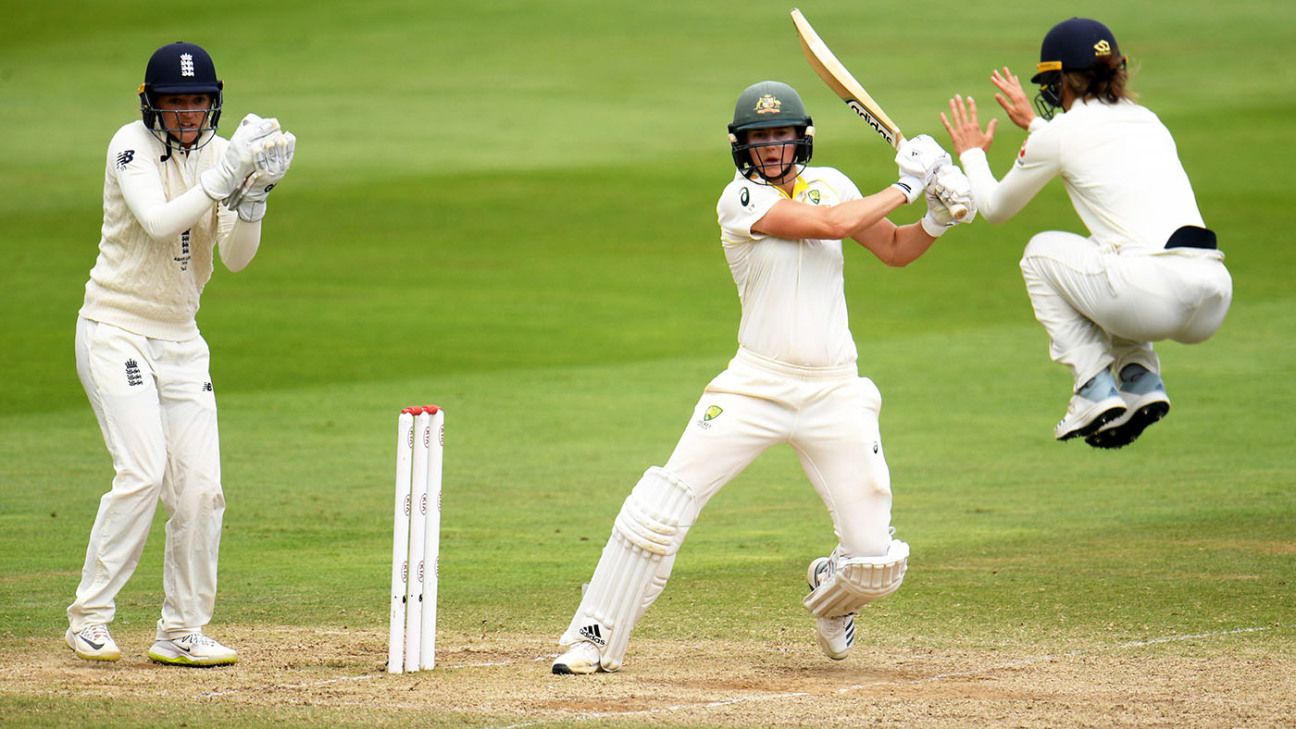
The conclusion of the Women's Ashes Test in Taunton has raised the question whether the format should be played across five days, after a combination of rain and stodgy scoring rates stymied the contest.
Australia batted out the final day of the one-off match, securing the draw they needed to retain the multi-format Ashes, with the coach Matthew Mott saying they had considered ways of making a match of it but weren't going to donate England a chance of victory.
Australia had dominated the Test from the start. And once they batted for the first four sessions and rain wiped out the rest of day two, England's chances were all but gone of fighting back for a win even before they took a defensive approach with the bat late on the third day. England did declare after saving the follow-on and made a couple of early inroads in Australia's second innings, but the visitors were never in danger.
"Maybe it's an advertisement for five-day Test in women's cricket," Mott said. "With four [days] and you take half a day out, it certainly wasn't enough. It would have been an awesome [fifth] day if we'd had the extra day.
"We're not a charity, we don't give up a result that easily. We've won the first three ODIs and we deserve the opportunity to bat it out. We weren't prepared to roll that dice and give England a chance when they didn't really earn the right to it."
There were 100 overs scheduled for each day of the Test. So, without weather interruptions, there would have been 400 overs available in the game compared to 450 across a five-day Test consisting of 90-over days.
"[A fifth day] would've helped get a result," Meg Lanning, Australia's captain, said. "It probably wouldn't have been a drab day if we had a day five but we both knew it was four days coming in. It's not a decision for us to make but I guess it's something to look at."
However, England coach Mark Robinson suggested that the first priority for the Test format in the women's game was to get more matches played before thinking about extending the length of them. This decade there have been just eight Tests with six of them being England-Australia matches.
"You've got to try and get more Tests, and more countries playing Test match cricket," Robinson said. "I think we all would agree it would help the development of the players.
"The young Aussie [Tayla Vlaeminck] what a promising quick, but at the moment she hasn't got control - if that's a 50-over game she has wides - but the beauty of this is it allows her to run in, how exciting is that? Games allow quicks to run in, it allows batters to bat time, build innings, be tactically better.
"It would help not just our team, but all teams around the world, the development of their players before we get to saying we should be playing five days in England-Australia [Tests]."
Tagged under

GERMANTOWN, Tenn. – Sammy Swindell has locked down a ride for the 29th annual My Place Hotels 360 Knoxville Nationals presented by Great Southern Bank.
Swindell is teaming up with Terry Steward and Scott Brown during the marquee event at Knoxville Raceway in Knoxville, Iowa, Aug. 1-3. Swindell’s preliminary night is currently scheduled for Aug. 1.
“They have been in racing for a long time,” he said. “Gary Wright drove for them for quite a few years. I’ve known the guys for quite a while. They let me borrow a motor for the first two 360 Nationals I raced and then I had it when I won the Short Track Nationals with the Big Game car in 2013.”
The team will invade Knoxville Raceway this Saturday to compete in the 360 division as a tune-up prior to the 360 Knoxville Nationals.
“Little things are different and you have to get the breaks during the night,” said Swindell, who has two career starts with the team that both occurred in November 2017. “I know we’ll have a competitive car. Doing it this way where we have a weekend up there before the 360 Nationals will be good.”
Swindell won the 360 Knoxville Nationals in 2016, making him only the second driver to win both the 360 and 410 Knoxville Nationals.
He has five top-five finishes during the event, which ranks tied for sixth.
Swindell is also scheduled to compete for his son, Kevin Swindell, and Swindell SpeedLab during the 5-Hour Energy Knoxville Nationals.
Tagged under















 Phone: (800) 737. 6040
Phone: (800) 737. 6040 Fax: (800) 825 5558
Fax: (800) 825 5558 Website:
Website:  Email:
Email: 






